It’s easy to miss the most important thing about the refreshed 2024 XC40 Recharge and C40 Recharge.
These models, which I drove last week near Volvo’s Gothenburg headquarters, make the rear wheels the primary drive wheels for the first time in a Volvo in decades. Yet they don’t look much different than their 2023 equivalents.
Like Swedes themselves, who can be understated about accomplishments, these models don’t flaunt what’s new on the surface or advertise the magnitude of their accomplishments. But they achieve some key steps on the way to scaling up EVs for the brand. With just enough cultural context, I held back the smirk as engineers pointed out to Green Car Reports at a recent preview that the vehicles hadn’t really changed that much: new motors, some minor changes to the battery pack, and a retune of the suspension.
2024 Volvo XC40 Recharge single-motor powertrain
Translation: it’s a bit of an engineering feat—and perhaps an industry first—considering that the CMA platform these models are built on favored front-wheel drive. But they sport no new badges or any of the vastly different trim, cladding, or staggered wheels other brands would be tempted to use to signal the shift. New 19-inch aero alloy wheels, a couple of new colors, and a few cabin trim differences sum up all the other differences for 2024 that a feature list is likely to give away.
The changes aren’t about being seen. They’re simply to create better-driving EVs. Given the central location of EVs’ big battery packs and their more even weight distribution, combined with advances in traction and stability control, Volvo sees rear-wheel drive as superior in EVs versus front-wheel drive. It’s made up its mind and isn’t waiting for the next big model changeover to deliver it.
After driving both the single- and dual-motor versions of these models, I’m convinced that most shoppers are going to find the rear-drive version just right—if not better. It would be my own preference over the dual-motor version.
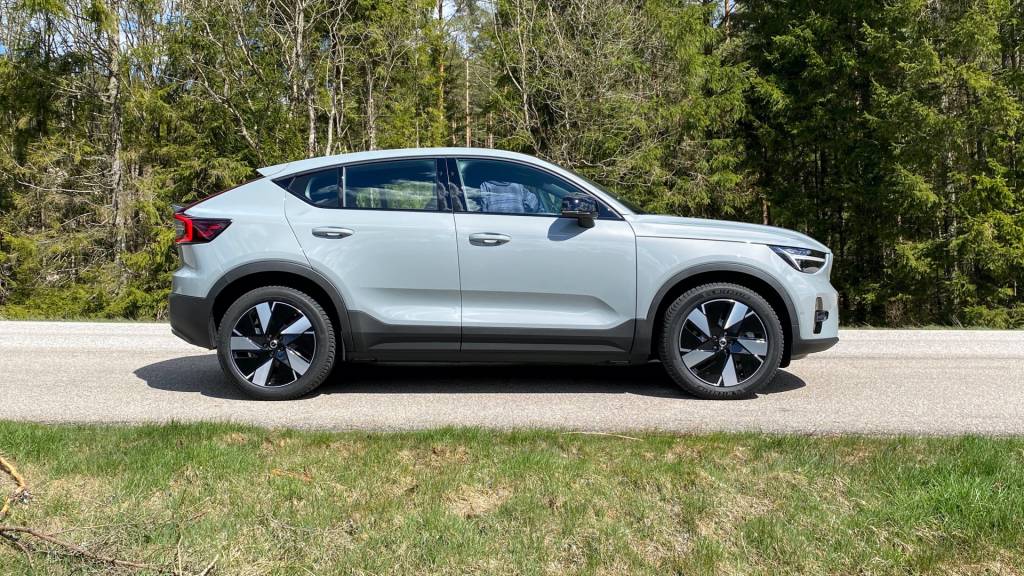
2024 Volvo C40 Recharge
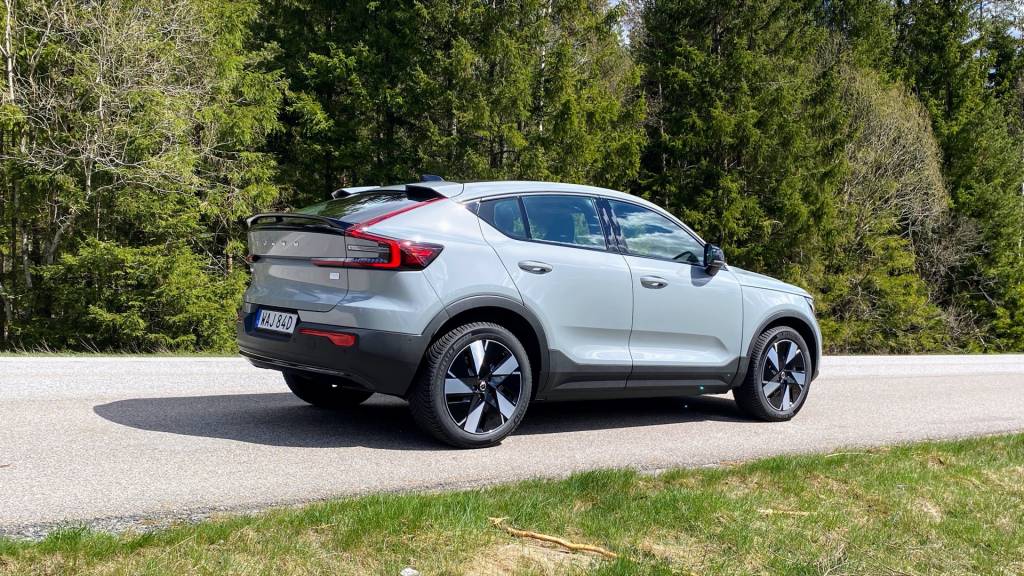
2024 Volvo C40 Recharge
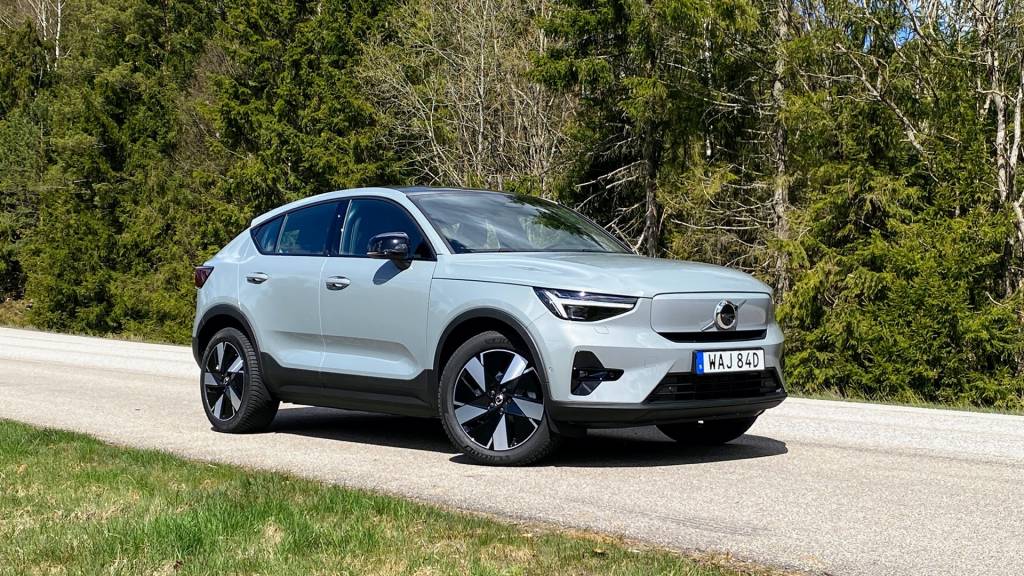
2024 Volvo C40 Recharge
XC40 Recharge and C40 Recharge range and efficiency
What helps these lineups make more sense from the get-go are the all-important numbers that shoppers will consider: a driving range now EPA-estimated at up to 297 miles for the C40 Recharge and 293 miles for the XC40 Recharge. That’s for the single-motor rear-wheel-drive versions. Dual-motor all-wheel-drive versions now go 257 miles and 254 miles for the two models, respectively—a gain of 31 miles for each.
That 14% boost in range comes with no change to the 78-kwh (gross) battery pack—although single-motor versions nearly reach 300 miles thanks in part to a few more usable kwh in their new 82-kwh pack (78 kwh usable, versus 75 kwh).
With a co-driver, I covered about 160 miles on Swedish roads, split nearly equally between a dual-motor C40 Recharge and a rear-drive XC40 Recharge. We averaged 3.4 miles per kwh with the dual-motor powertrain, then nearly 3.9 miles per kwh in the single-motor version. It wasn’t an apples-to-apples comparison, though, as the latter portion of the route covered in the rear-drive version included slower-moving roads and more traffic, which would have otherwise likely improved efficiency. In either case, it indicated both versions are likely now able to return more than 250 miles on a charge in spirited (albeit not high-speed) driving.
The greater efficiency and range isn’t from being rear-wheel drive, either, Volvo emphasizes, but from the electric propulsion development prowess it’s been building in-house. These refreshed models represent the start of that.
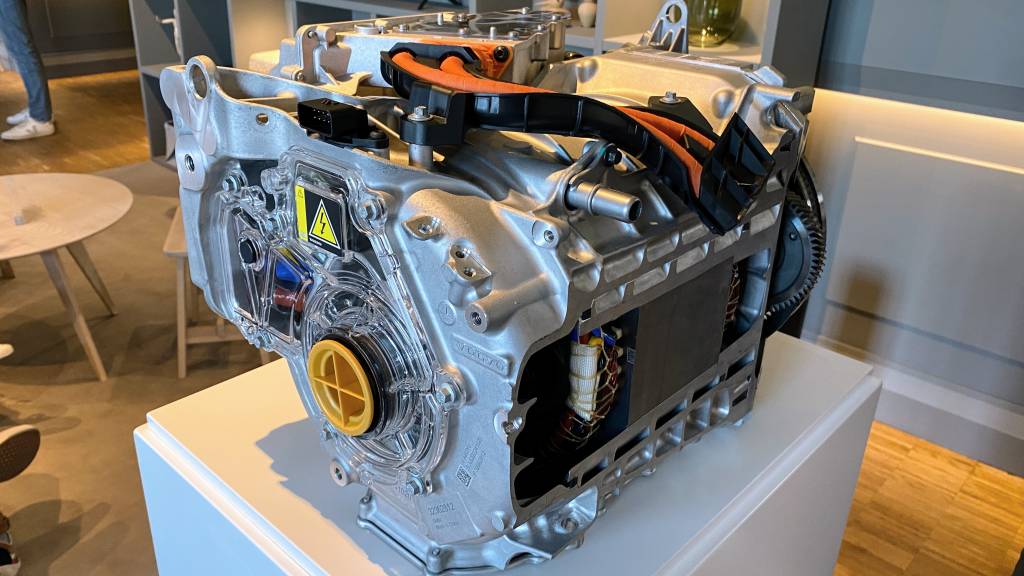
Volvo electric motor in C40 and XC40 Recharge
Volvo goes its own way with EV motors
A new 255-hp permanent-magnet (PSM) motor in back—designed and engineered by Volvo in Sweden, and built in Sweden for the U.S. and Europe—is the star of the powertrain. While Volvo used two identical permanent-magnet motors from a supplier in the outgoing 2023 and earlier versions of these vehicles, it has now shifted to a 147-hp asynchronous (induction) motor for the front wheels in dual-motor models. Volvo also moves to its own hardware and software controls for the motor system, whether single- or dual-motor.
Single-motor models make 248 hp and 310 lb-ft of torque, and altogether, dual-motor versions make a combined 402 hp (same as the 2023 model) but produce a higher 494 lb-ft of torque, versus their predecessors’ 487 lb-ft. Because the induction motor doesn’t require a charge just to spin along, the configuration allows dual-motor models to run as rear-wheel-drive vehicles the vast majority of the time, using the front unit only when it’s needed for all-out performance or traction at the front wheels.
The motor choice may save Volvo significant money as it scales up its EVs and works toward a fully electric lineup by 2030. Off-the-shelf PSM motors from suppliers can be very expensive, and when one isn’t very efficient, it’s a double sting.

2024 Volvo C40 Recharge
In acceleration, the new model doesn’t feel much different. Volvo claims the same 0-60 mph time of 4.5 seconds in dual-motor form, while single-motor versions clock in at 6.9 seconds. Both motors remain geared quite tall, at 8.57:1, so there’s some emphasis on higher-speed passing guts over pure off-the-line oomph. Simply put, you won’t miss the extra punch of the dual-motor if you don’t drive it.
Volvo Recharge battery pack details
The 82-kwh pack looks virtually identical to the 78-kwh pack on the outside, but it’s a different affair inside. The 78-kwh pack uses 27 modules, each with four groups of three LG pouch cells connected in parallel. In the 82-kwh pack, just four much larger CATL prismatic cells make up each module, with a third as many total cells for the pack. All said, the CATL cells also bring slight gains in energy density, while their cooling is a little more straightforward, according to Klas Olsson, the manager for these models’ battery system design, who summed the new pack as “different but not that different.”
Volvo did hint that all versions will get the 82-kwh pack eventually, but it said that for at least the first full year dual-motor versions will retain the 78-kwh pack as a matter of production capacity.
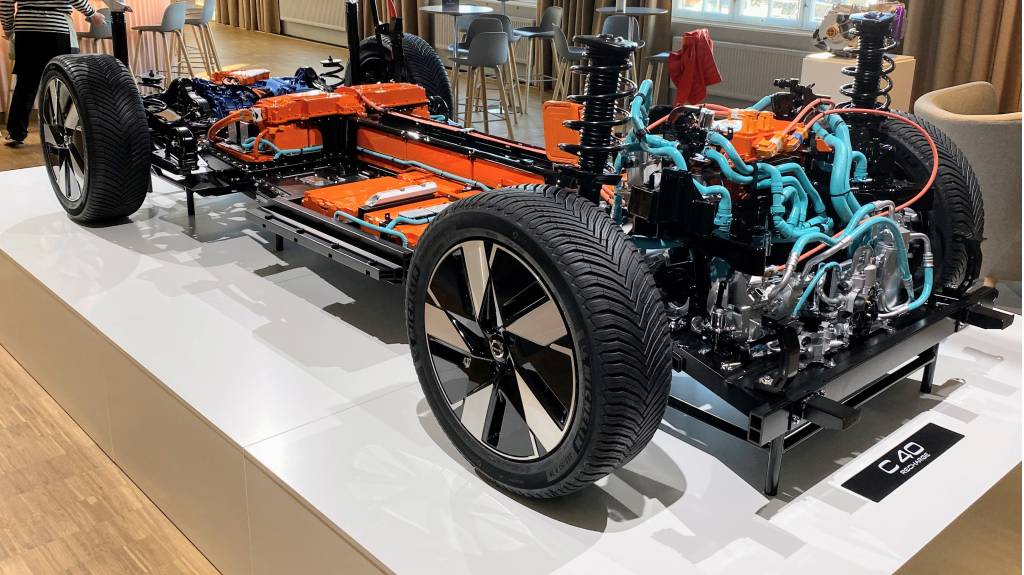
Volvo battery pack and chassis – C40 and XC40 Recharge
Because of the battery pack difference, single-motor versions fast-charge a little quicker. They get from 10-80% in just 28 minutes and reach a peak 200 kw, while dual-motor versions do it in 34 minutes and reach a peak 150 kw.
Volvo really wanted journalists at the test drive to enjoy the one-pedal driving mode and firm steering setting, but I liked the experience better with both toggled off. The steering just feels more consistent in its more boosted form, although a middle level of regenerative braking would be a better experience for all.
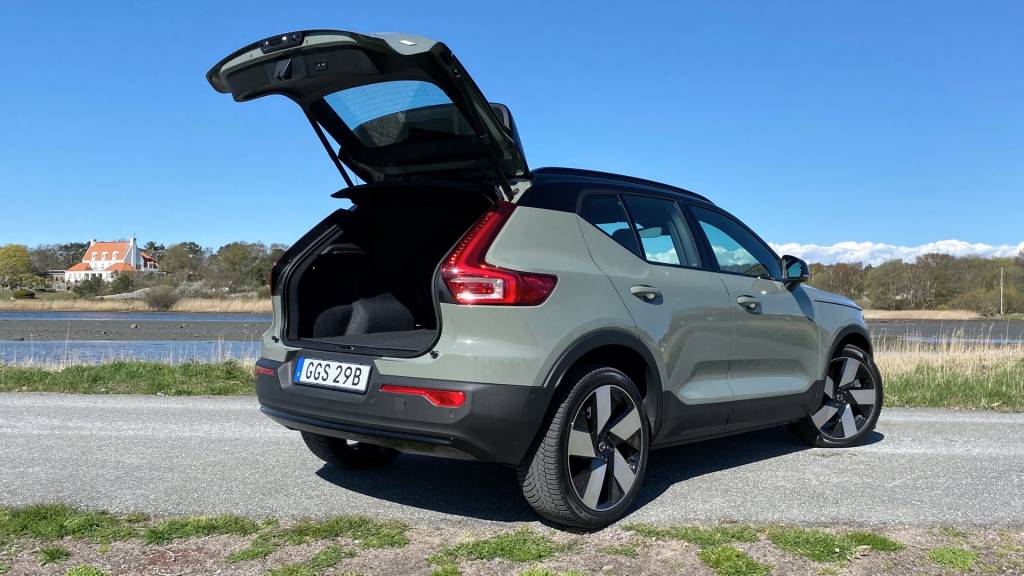
2024 Volvo XC40 Recharge
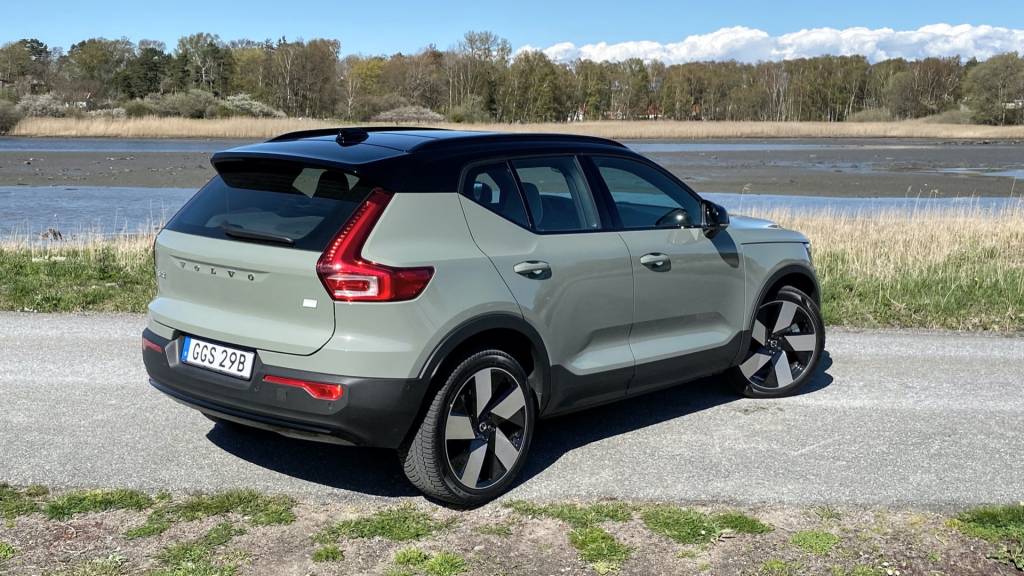
2024 Volvo XC40 Recharge
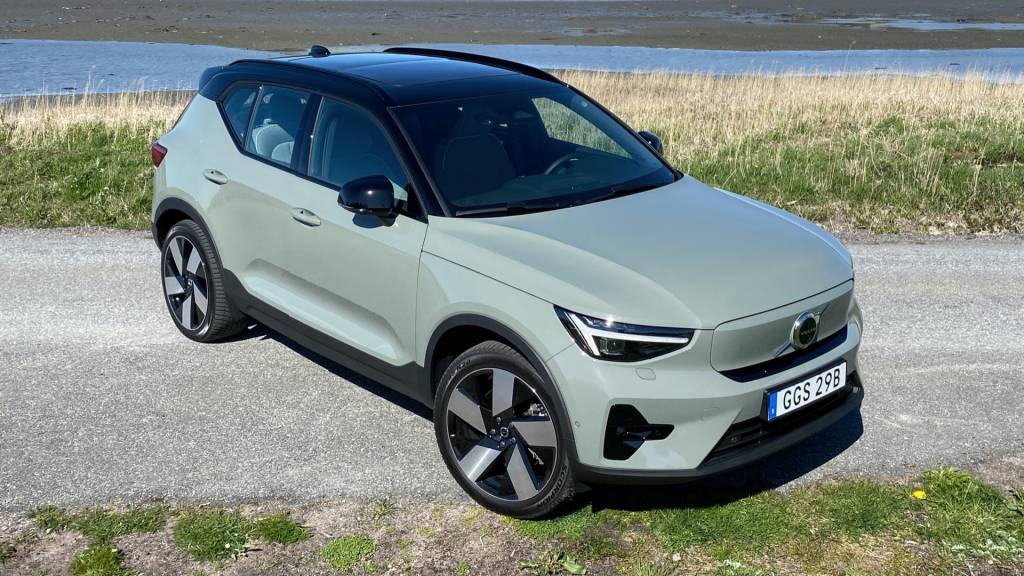
2024 Volvo XC40 Recharge
XC40 and C40 Recharge ride and handling
The rear-wheel-drive layout and other updates help these 2024 models carry themselves down the road with a little more sophistication. Changing up the rear motor required a new rear subframe, which gave engineers the opportunity to retune the suspension. Outgoing versions of these Recharge models can ride on the jittery side, but it’s now been turned to be a little more luxurious without any loss of athleticism—and the single-motor version steers and handles with a bit more neatness. In a route that took us through a series of curvy backroads, mostly at speeds of 30-55 mph, the new models were both a little more forgiving and more natural in quick transitions and less prone to carrying small impacts and coarse surfaces into the cabin. As before, they’re remarkably tight from wind noise.
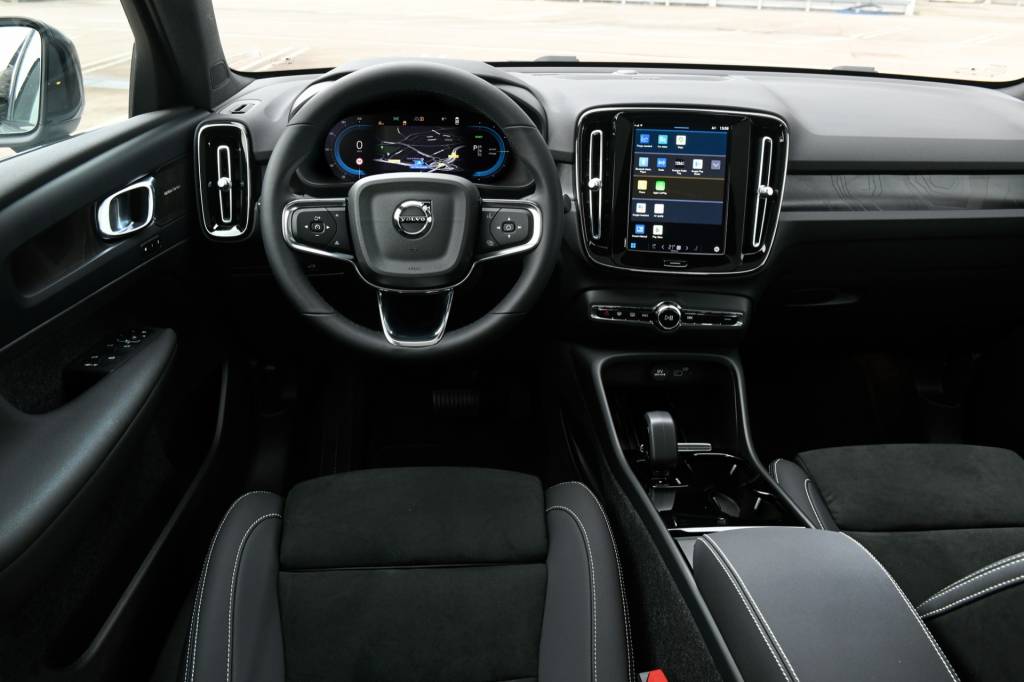
2024 Volvo C40 Recharge
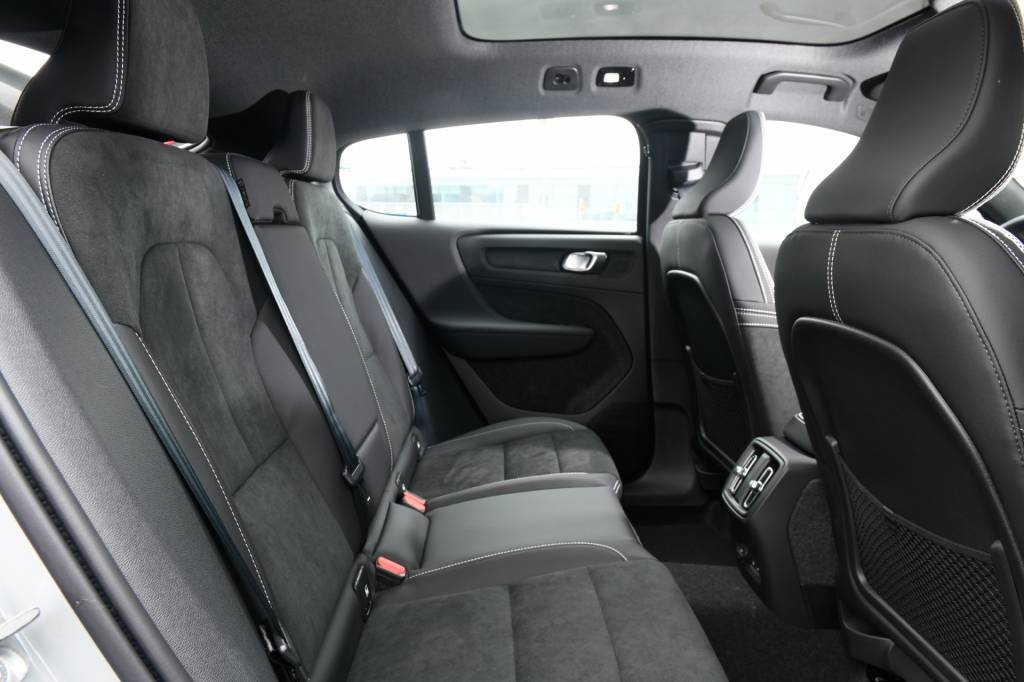
2024 Volvo C40 Recharge

2024 Volvo C40 Recharge
The cabin impresses as understated at first, but it wows in the textures, details, and seat comfort and support. Volvo got it right from the start, so it’s good news nothing much changed. As in most other recent models from Volvo, it’s also easy to find a comfortable driving position (and rear-seat comfort) for a wide range of body heights and sizes. Although the center console layout detracts a bit from space compared to rivals, at 6-foot-6 I found it easy to get in and out and be comfortable in both the C40 Recharge and XC40 Recharge. The coupe-like C40 doesn’t offer nearly as much cargo flexibility, though, and its design doesn’t charm from all angles in quite the same way.
Prices are yet to come as these models’ arrive later in the year. The 2023 XC40 Recharge models start at $54,645 and $56,395 respectively; look for 2024 single-motor versions to land closer to the $50,000 mark.
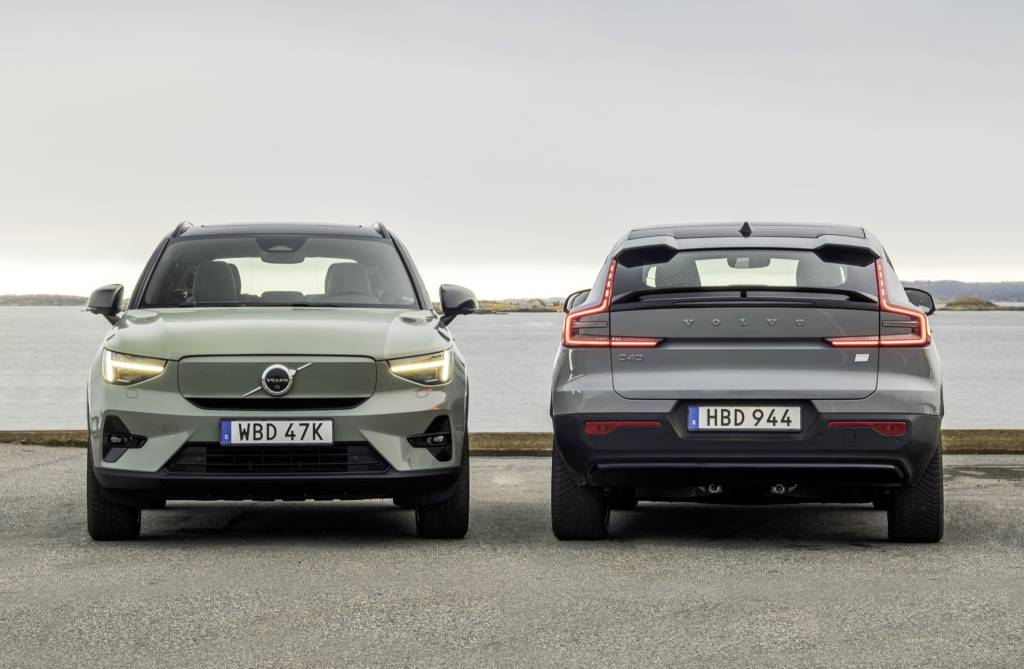
2024 Volvo C40 Recharge
With the pending arrival of the big EX90 electric SUV early next year, and now an EX30 small SUV on the way too, these refreshed 40-series models show that Volvo has its priorities in check—with more range, more efficiency, and faster charging. And that you won’t miss.
—
Volvo provided travel and lodging to bring you this firsthand review.
